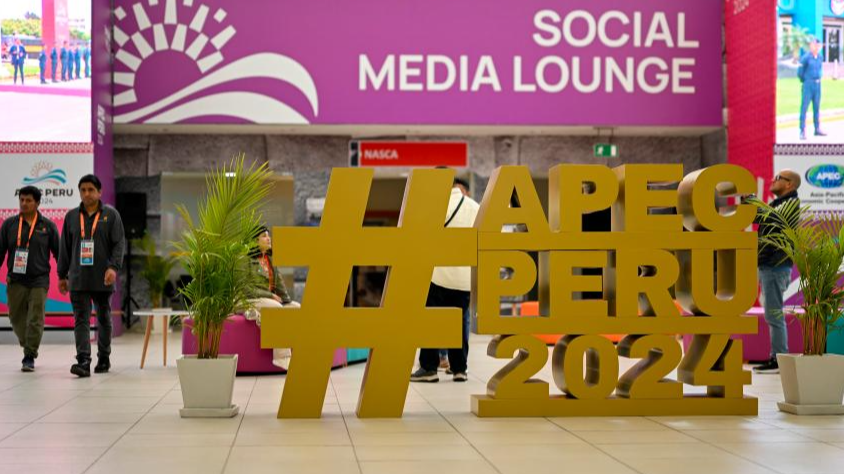
Southeast Asia balancing energy security and pursuing a low-carbon economy deserve more attention from the Asia-Pacific Economic Cooperation meeting in Lima, Peru, where sustainable growth is listed as among the pressing concerns of its member economies, analysts said.
Seven of the 10 members of the Association of Southeast Asian Nations (ASEAN) are part of APEC and one of the priorities of this year’s APEC meeting from Nov 10 to 16 in Peru is to promote sustainable growth for resilient development.
To achieve this goal, APEC leaders are working on initiatives to prevent and reduce food loss and waste; draft policy guidance to develop and implement low-carbon hydrogen policy frameworks to support energy transition; and promote sustainable and resilient finance.
“We can see that most ASEAN countries have a plan to reach net zero emission (in the next 30 to 40 years) … they have a clear target to reach carbon neutrality,” said Fabby Tumiwa, executive director of the Jakarta-based Institute for Essential Services Reform.
Tumiwa said like most growing APEC economies, ASEAN members want to boost their economies but with “less intensive carbon emissions”.
He said this is why ASEAN countries plan to develop more renewable energy to reduce dependence on fossil fuels and gradually phase out coal plants.
However, the progress of renewable energy production across Southeast Asia is uneven.
Tumiwa said that while Vietnam has succeeded in significantly increasing renewable energy, countries like Indonesia are still in the process of moving in that direction.
“This is something that should be done by every country, by being ambitious with the energy transition,” he said.
Aditya Lolla, Asia program director of Ember, a London-based energy think tank, said most ASEAN countries are still in the early stage of energy transition and this is supported by the rise of cheaper clean energy technology.
However, he noted that uncertainty over policy and regulations may keep businesses from investing in ASEAN’s renewable energy sector.
“Clean energy needs a market because if you have a market, it gives certainty to investors to come and invest into new projects and to develop that. You have to send the right market signals through policy and regulation,” Lolla said.
He said ASEAN countries are “demand powerhouses” as their fast-growing economies also demand more electricity and power generation.
According to Lolla, ASEAN also has to respond to three challenges: how to achieve energy security; how to keep power rates affordable for their citizens, and how to ensure enough supply to meet the demand.
“I think the entire world's eyes are on ASEAN, and how ASEAN will actually manage transition. ASEAN has to meet the growing demand and meet it with a new … clean form of energy. So it's not an easy task,” Lolla said.
ASEAN countries have committed to reducing their emissions as signatories to the Paris climate pact.
The regional bloc is establishing an ASEAN Centre for Climate Change (ACCC) in Brunei to facilitate regional cooperation and coordination on climate change initiatives among ASEAN members.
In a joint statement issued on Oct 9 at the 44th and 45th ASEAN Summits held in Laos, ASEAN “re-emphasized” measures to address and facilitate a just transition including collaboration in the development of low-emission technologies and facilitating cross-border flows of clean and renewable energy.
At the 2023 summit in Indonesia, ASEAN leaders committed to achieving a 23 percent renewable energy share in ASEAN’s energy mix, with clean energy accounting for a 35 percent share in installed power capacity by 2025, under the ASEAN Plan of Action for Energy Cooperation.
However, studies show that ASEAN is still lagging behind its energy transition target.
According to a 2023 report by Ember, ASEAN has recorded a 43 percent average annual growth in solar and wind generation between 2015 and 2022.
Combined solar and wind generation in the region grew from 4.2 terawatt hours (TWh) to 50 TWh between 2015 and 2022. This accounted for 14 percent of the total electricity demand growth seen in the same period.
Ember said Vietnam, which introduced a feed-in tariff policy in 2017, was the key driver behind this growth and this country alone contributed 69 percent of the total solar and wind generation in the region in 2022.
However, the International Energy Agency (IEA) estimates that for the ASEAN region to be on track for the 2050 net zero emission scenario, solar and wind need to account for 23 percent of total electricity generation. Ember said that ASEAN needs an additional 164 gigawatts (GW) of solar capacity and 65 GW of wind capacity by 2030 to meet the IEA target.
Putra Adhiguna, the Jakarta-based managing director of the Energy Shift Institute, an independent think tank, notes that “Vietnam is moving ahead, but everybody else is kind of like taking their own pace”.
As APEC members, Adhiguna said Southeast Asian countries need to show that they can build an integrated power grid within the region and how this can accelerate the energy transition in the region.
He noted that an integrated regional power grid is the future for ASEAN’s energy transition, allowing member countries to harness indigenous clean energy sources and generate electricity through a regional power grid.
ASEAN has no existing regional power grid but there is existing bilateral cooperation among ASEAN member countries, such as the Singapore-Indonesia solar power export deal.
Singapore is also importing hydropower from Laos which is coursed through a multilateral cross-border trade that also involves Malaysia and Thailand.
In Laos, a 600-megawatt wind power plant in the southern Sekong and Attapeu provinces exports and sells power to Vietnam.
Contact the writer at prime@chinadailyapac.com


